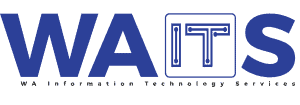In today’s digitally driven world, effective monitoring of computer systems and networks is crucial for businesses to ensure smooth operations and maintain security. Two primary approaches to PC monitoring have emerged: on-site and remote monitoring. While both methods serve the same purpose, they differ significantly in terms of implementation and advantages. In this blog post, we will explore the differences between onsite and remote PC monitoring, discussing the pros and cons of each approach, and help you determine which one is best suited for your business.
If you’re not sure what computer remoting is, or what on site monitoring is, they essentially are the two main forms of computer monitoring. Remote monitoring is the ability to access a computer or device from another device, at any time, and from anywhere, and usually only given to trusted partners – usually to who handles your IT. On site, is just how it sounds, it means who deals with your IT is located on the premise of your business. Both of the options are usually used for things such as computer repair and diagnosing issues.
Before we explain to you the pros and cons of onsite vs remote monitoring, you need to evaluate your business requirements and your infrastructure capabilities. All of these points will help you to make an informed, better judged decision.
Business Requirements
As the boss of your business, only you know what your business needs. Do you need someone to work in person to specifically maintain your IT, including your servers, Wi-Fi, and work equipment? Or would hiring a business or individual part-time be better suited to what you require? Maybe you don’t even need a physical person to come into the office – maybe someone overseas could be better suited to your kind of job. These are all some very important questions you need to ask yourself when choosing between onsite or remote monitoring. Maybe you want someone to do both – someone with the ability to come into the workplace to maintain or set up various bits of IT equipment every now and then and have the ability to look after you remotely other days. The decision if purely yours, but it is best to consult with your IT department or future IT partners.
Infrastructure Capabilities
Businesses nowadays have the decision of how they want to set up their infrastructure. The choice lies between having this infrastructure local or remote, kind of like how you have the option when hiring your employees – do you want them to work in the office, or from home? Typically, bigger businesses like to outsource their IT infrastructure, and smaller businesses like to have it within the workplace. This is generally, as smaller businesses tend to have a lot less IT equipment, which makes it easier to take care of from within the workplace. But this isn’t always the case! Sometimes you have no idea what you’re doing (which is perfectly fine!) so you leave it to the experts, no matter how small or big your business is!

On Site Monitoring
Onsite monitoring is one of two main forms of computer monitoring. This style refers to the practice of monitoring computer systems and activities within a physical location. It involves the deployment of monitoring tools and personnel who directly observe and manage the systems onsite, within the business. Onsite monitoring is being used less and less nowadays and is only necessary in situations where physical access to the systems is required. This is often done where a business has a data centre, server room, or have critical infrastructure facilities to ensure smooth operation of hardware, software, and network components.
Top 3 Features to Consider of Onsite Computer Monitoring
- On-site monitoring allows for immediate detection and response to potential issues as they happen.
- Administrators have direct access to the hardware, making it easier to troubleshoot and resolve problems.
- Monitoring data is stored locally, ensuring complete control and compliance with data privacy regulations.
Top 4 Pros of Onsite monitoring
- One of the primary arguments in Favor of on-site computer monitoring is that it can enhance productivity. By monitoring computer activities, organizations can identify time wastage, unauthorized use of company resources, and excessive personal internet usage. This knowledge allows management to address such issues promptly, ensuring that employees stay focused on work-related tasks.
- On-site computer monitoring can play a crucial role in maintaining cybersecurity within an organization. It enables the detection and prevention of security breaches, such as unauthorized access, data theft, or malicious software installation. Monitoring tools can alert IT teams about suspicious activities, enabling them to take immediate action to mitigate potential threats and safeguard sensitive information.
- Certain industries, such as finance and healthcare, have strict compliance requirements, including data protection and privacy regulations. On-site computer monitoring can help organizations ensure compliance by monitoring and controlling employee access to sensitive data, preventing the unauthorized transfer of information, and generating audit trails.
- Monitoring can be instrumental in detecting and preventing instances of harassment or discrimination in the workplace. By monitoring communications, including emails or instant messages, organizations can identify and address any inappropriate behaviour promptly, fostering a safe and inclusive work environment.
Top 4 Cons of Onsite monitoring
- One of the most significant concerns surrounding on-site computer monitoring is the invasion of employees’ privacy. Constant monitoring of computer activities, including emails, internet browsing, and keystrokes, can create a sense of distrust and unease among employees. It may erode the sense of autonomy and personal space, potentially leading to decreased job satisfaction and employee morale.
- Monitoring systems can be prone to misuse by unscrupulous individuals within the organization. Excessive surveillance or collecting unnecessary personal information can result in employee abuse or even identity theft. Organizations must establish strict policies and controls to prevent such misuse and ensure that monitoring practices adhere to legal and ethical guidelines.
- The constant scrutiny and monitoring of employees can generate stress and anxiety, affecting mental well-being. The feeling of being under constant surveillance can lead to increased job dissatisfaction, decreased motivation, and even psychological distress. This can ultimately have a negative impact on employee performance and organizational culture.
- Overemphasis on computer monitoring data may divert attention from other important aspects of employee performance, such as creativity, collaboration, and critical thinking. Monitoring primarily quantitative metrics may undermine the value of qualitative contributions, stifling innovation and hindering the development of a dynamic and agile workforce.

Remote Monitoring
Remote computer monitoring is the other, main type of monitoring. It includes monitoring and managing computer systems, or activities from a remote location. This type of monitoring allows individuals or organisations to track and analyse computer-related data without the need for a physical presence at the monitored location. Remote monitoring is commonly used for purposes such as network security, troubleshooting technical issues, and ensuring compliance with regulations. This enables real-time monitoring of network traffic, user behaviour, and system performance, providing valuable insights into potential threats or inefficiencies.
Top 3 Features to Consider – Remote
- 24/7 monitoring: Remote monitoring allows for continuous surveillance of systems, irrespective of the user’s location.
- Centralized control: Monitoring software can be accessed from anywhere, providing a comprehensive view of the entire network.
- Scalability: Remote monitoring easily accommodates the expansion of the business without significant infrastructure adjustments.
Top 4 Pros of Remote Monitoring
- Remote computer monitoring allows businesses to maintain a high level of security. It enables real-time monitoring of network traffic, software usage, and user behaviour, helping identify and address security threats promptly. Monitoring software can detect unauthorized access attempts, malicious activities, and potential data breaches, mitigating risks and safeguarding sensitive information.
- Monitoring employee computer activity remotely can enhance productivity. It allows employers to track the time spent on tasks, identify inefficiencies, and offer feedback to improve performance. Remote monitoring can also discourage time-wasting activities, such as excessive social media use or non-work-related internet browsing, leading to better focus and time management.
- Certain industries, such as finance and healthcare, are subject to strict compliance and regulatory requirements. Remote computer monitoring helps organizations adhere to these standards by ensuring data protection, access control, and privacy measures. It provides an audit trail of user activity, aiding in compliance reporting and internal investigations.
- Remote computer monitoring enables IT teams to diagnose and resolve technical issues promptly. They can remotely access systems, troubleshoot software glitches, and apply updates or patches. This capability reduces downtime, minimizes disruption to users, and improves overall system reliability and performance.
Top 4 Cons of Remote Monitoring
- The most significant concern with remote computer monitoring is the invasion of privacy. Employees may feel uneasy knowing that their activities are being continuously monitored. Monitoring personal communications, private browsing, or non-work-related online activities can lead to a breach of trust and morale issues within the organization. However, please remember that many businesses and organisations have policies in place to ensure that monitoring is used responsibly and only for legitimate business purposes.
- The legality of remote computer monitoring varies across jurisdictions, and organizations must ensure compliance with applicable laws and regulations. Monitoring activities that infringe on employee privacy rights can result in legal consequences. Organizations should establish clear policies and obtain employee consent to mitigate legal and ethical risks.
- Remote computer monitoring can be misused if not implemented responsibly. If management becomes excessively intrusive or uses monitoring data to micromanage employees, it can create a hostile work environment. Balancing the need for monitoring with employee autonomy and trust is crucial to prevent negative consequences.
- While remote computer monitoring offers numerous benefits, it has certain technical limitations. Network connectivity issues, software compatibility, and firewall restrictions may hinder the effectiveness of monitoring tools. Additionally, monitoring software may generate false positives or miss certain types of threats, requiring constant updates and fine-tuning.
Both on-site and remote PC monitoring have their distinct advantages and disadvantages, and the choice between the two depends on the specific needs and resources of your business. On-site monitoring provides enhanced security and faster response times, while remote monitoring offers scalability, flexibility, and cost-effectiveness. By evaluating your business requirements, infrastructure capabilities, and budget, you can make an informed decision about which approach is best suited for your organization. Remember, regardless of the chosen method, effective PC monitoring is essential for ensuring the smooth functioning and security of your business operations.
If you would like help from our trusted IT experts with over 20 years of experience, then please click here to contact us.
By Sophie Wholer – 27th September 2023

